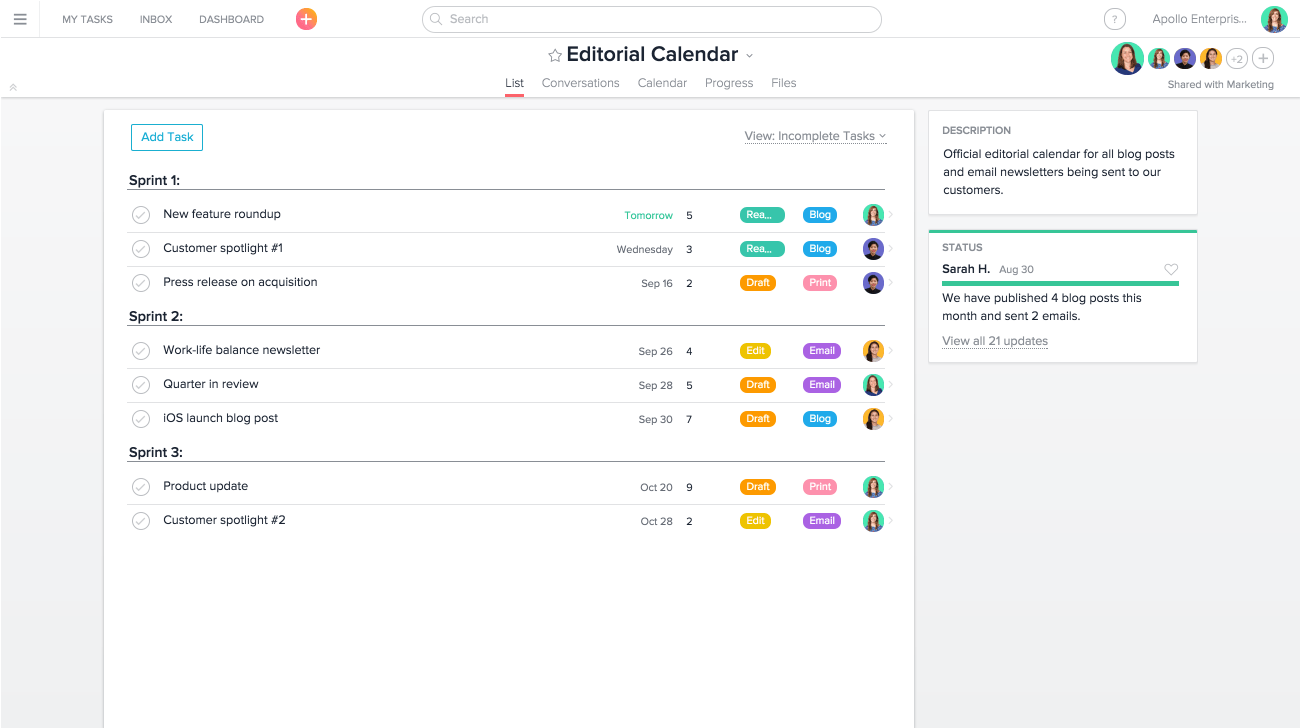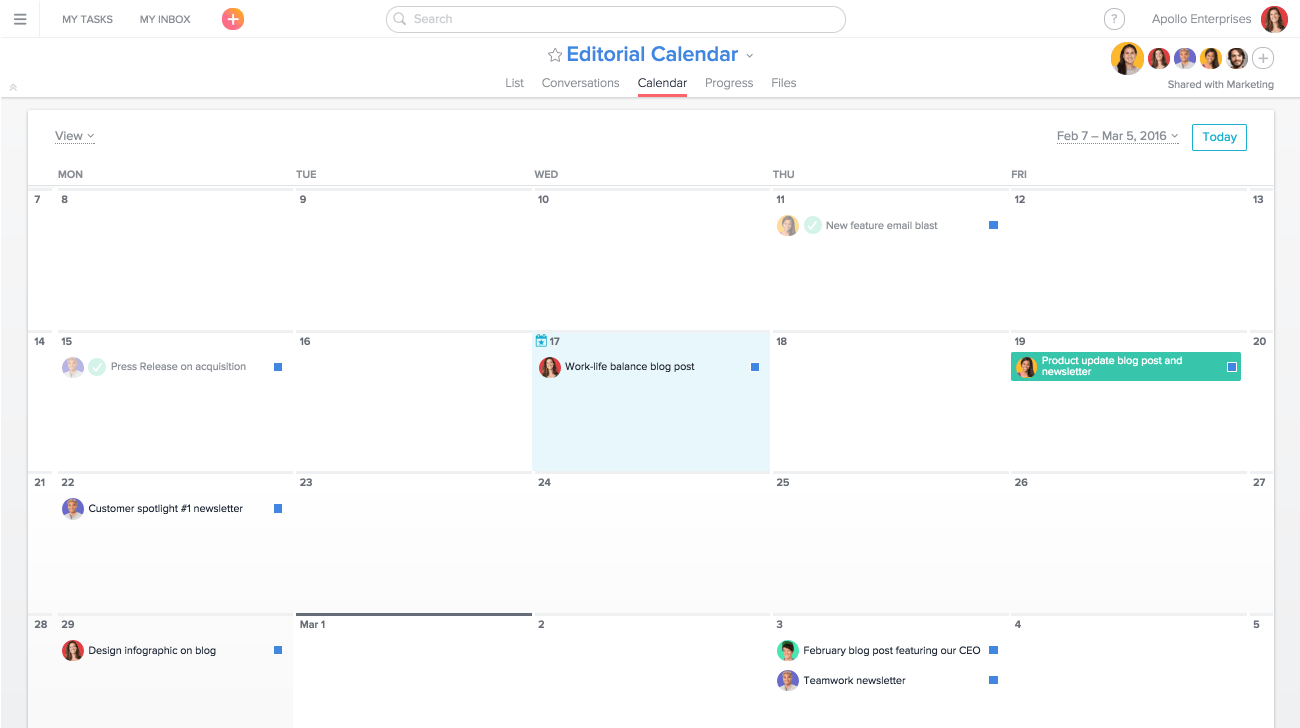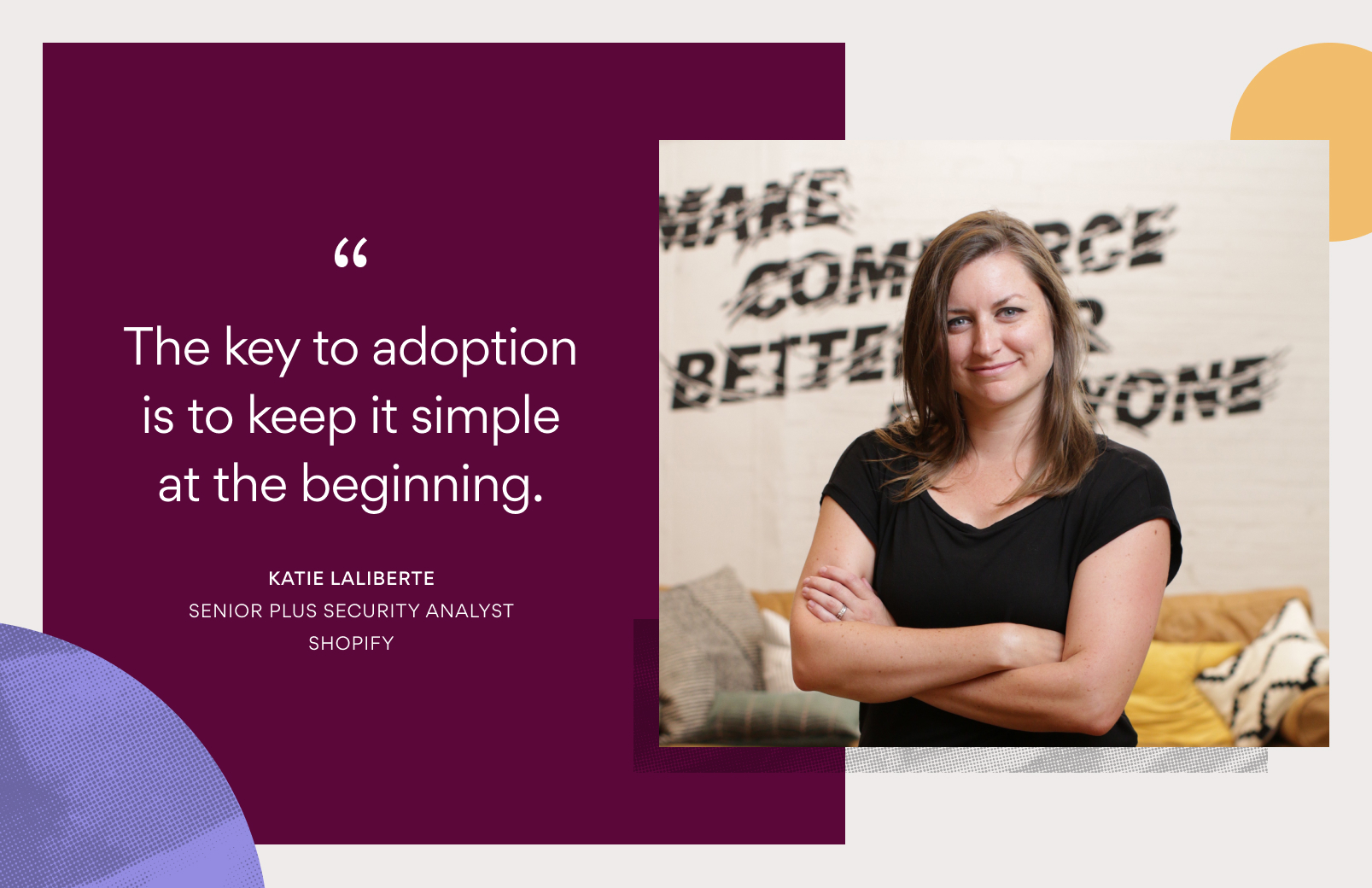4 tips for successfully planning and executing your editorial calendar

Catchy copy. Click-worthy headlines. Engaging long-form content. Whatever form your content takes, chances are it’s a large part of your broader marketing strategies. With so much content to consume online, it’s more important than ever to expertly manage content from concept to publication so writers can focus on creating content their audiences want to read.
Not only that, the production process is complicated: Teams rarely have clarity or accountability, which means drafts and visual assets get lost. Deadlines get delayed.
Planning and executing on your content strategy doesn’t have to be a headache, though. Here are four tips to create an editorial calendar that will help you plan, write, and deliver your best content yet.
Want to learn how to run your other marketing programs successfully? Get your free guide on how to create effective processes that turn your marketing strategy into results.
1. Work backwards and create a list
Create a schedule for common content types you produce by breaking down every step of the process from beginning to end and creating a schedule. What needs to happen in order for a piece to go from abstract to hitting “publish?” Map out the steps, like:
- Write a creative brief
- Brainstorm ideas
- Conduct research
- Interview subject matter experts
- Do keyword research for SEO
- Create an outline
- Write the first draft
- Request reviews from stakeholders
- Get approval from editor
- Request visuals or photos from design
- Stage the content
- Publish
- Share on social
This way, you can estimate how long the production process will take and divvy up responsibilities.
Templatizing this workback schedule makes it easy for your team to use the same task for each piece of content, and ensures that no one misses any steps. Here’s an example of a template task for a piece of content with a workback schedule:


2. Put everything on the editorial calendar
With a standard process in place and a way to predict publication dates, putting everything on a calendar is the next step. By creating clear due dates, everyone will know who’s responsible for what and you’ll have a clear idea of everything in process from status to publication date.
Whether you’re responsible for writing content or managing the broader strategy, your editorial calendar will be the go-to place to set expectations and understand the team’s workload.
3. Shift deadlines and responsibilities on the fly
Having everything on one calendar allows you to get a holistic view of your broader strategy and roadmap. And since everything is centralized, it’s easier to shift things around if needed and create a more cohesive experience for your audience. Here are some questions to ask when you’re looking at your editorial calendar:
- Are there gaps in our calendar that need to be filled?
- Does our entire content experience meet the needs of our audience?
- Is our content well distributed over the calendar?
- Do we have a good mix of content types?
- Is anyone on our team short on bandwidth—do we need to shift responsibility or due dates?
With everything in one place, you can easily move content around or change the distribution of responsibility.
4. Communicate with everyone—often
Communicating with content creators, designers, and distributors is essential to executing a successful content strategy. Centralizing communication (along with your calendar) provides everyone with the context they need, making them more efficient and effective.
- Meet with your team regularly to provide broader strategy updates, go over your calendar, and check in on the team’s bandwidth. Set up a project for your meeting notes where you can track the agenda and action items.
- Involve stakeholders early and often. Establish who the key stakeholders are for each piece of content when it’s first added to the calendar, and make sure they’re looped in at key points to make the approval process smoother.
- Connect communication to the content it’s about. Keeping communication centralized, whether it’s about copy or an accompanying asset, means stakeholders know where to look for the most up-to-date status and who to communicate with at all times. Comment on tasks or post in team conversations, instead of relying on chat or email, so that everyone is working from the same source of truth.
- Communicate cross-functionally to maximize the impact of your content. Involve other teams who might benefit from the content your team is producing in the creation and distribution process. Add people as followers to your projects or tasks so they’re notified of updates in real time.
Creating and managing a content strategy can be a daunting task—after all, a lot goes into producing content of all lengths and formats. By mapping out a plan, sticking to a calendar, and involving everyone who’s needed to deliver on your plan, each piece of content is likely to be a success. When the process is streamlined, your team can focus on the quality of the content and the impact it has.

